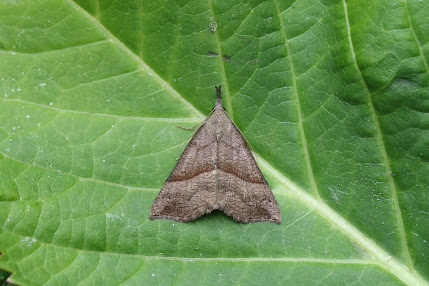Welcome to all readers of my first blog where I aim to share some of the wildlife encounters I have. The main focus will definitely be centered around Moths as this is my biggest passion amongst our British Wildlife however I am sure we may divert off somewhere else along the way.
I have been recording moths for a few years now and although I am certainly no expert, it certainly is a good feeling to start to recognise the more common species, and not always have to resort to books, apps or those with a greater knowledge (not that there is anything wrong with any of these options as will no doubt become clear in future reports)!
So two questions lead into this blog - 1. Why do I record Moths and 2. Why a blog?
To answer those it is a 2 part process for each question and they can be linked to each other as well.
So the reason I got into recording Moths was actually through work at my old job- before it wasn't even something I had ever really given much thought to as a species, let alone how people studied them. Attending a session at RSPB Bempton Cliffs with the then Visitor Experience Manager, it was my first glimpse into this side of Lepidoptera. The part that still hooks me now as it did back then, is the feeling that you just don't always quite know what you're going to "catch". It is that feeling that keeps you coming back - some would say it is akin to an addiction, especially during the summer where you are potentially up in the silly hours of the morning, when most are still fast asleep and yet there you are, bleary eyed in the back garden, with that giddy feeling that this morning could be the "big one" and you'll find that moth you've never seen before, a first for the garden - or even simply, your favourite!
The second part and especially now that it is becoming a more frequent hobby - is the scientific side. The capturing of data, ascertaining the trends of certain species, improving the knowledge of species ecology, the need for conservation & most importantly, raising awareness.
This is where the second question comes in - why a blog? As mentioned it is a 2 part process - firstly it is what it offers me. A way to capture the highlights that I can look back on, a way to allow myself to monitor trends locally and most importantly create a user friendly way of capturing my records beyond a fairly mundane Excel Spreadsheet (albeit an important one). Secondly, what it offers to others. When I worked in conservation, my role was all about spreading the message and raising awareness of how British Wildlife was fairing. If by creating this blog, just one person reads it and takes something away from it, learns something - then it's goal has been achieved.
Right that's most of the waffle - let's have a look at some moths (and a little bit of explanation)
For this first blog, I will include the majority of moths recorded to get us started but going forward I will try and focus on the highlights.
These moths were recorded overnight 16/06/2025, in my back yard (Scarborough, North Yorkshire) - a place that on the face of it you wouldn't necessarily coin as a wildlife haven - why? Well my house is mid-terraced, in a town, surrounded by light pollution and generally would be described as "amongst a concrete jungle". However, not all is lost as a few houses do have planters and flowers and at the end of the street is a park with some areas of grassland and slightly further afield, a cemetery with a varied habitat and small pockets of urban woodland.
The first moth we will take a look at is the "Snout" - a name that even a non moth-er could see why! Size: 15-19mm forewing.
The second moth I recorded was this Dark/Grey Dagger. Size: 17-20mm forewing.
Now importantly here is the " / ". The reason for this, is that this moth in adult form can not be distinguished as either Dark Dagger or Grey Dagger without further inspection shall we say! This comes in the form of checking its genitalia but also only possible when combined with dissection. This is not a process that I would consider necessary for the level of recording I am at, however it does very much have an important place - a topic for future discussion perhaps!
Our 3rd moth again is one that I see reliably each year and potentially in very good numbers - having recorded 25 on 07/08/2020. This is Marbled Beauty. Size: 12-14mm forewing.
This is another species that would be described as very common and widespread across the county. The species can have varied markings, however this acts as the perfect camouflage for when during the day - it rests on stone walls & rocks. This species is generally associated with having a flight season (when you can expect to see them) of July-August however this is definitely expanding to June-Sept as an average. Larval food source is Lichens that are found growing on rocks, walls & roofs. Total records are 23,026 times with a specimen count of 56,639







No comments:
Post a Comment